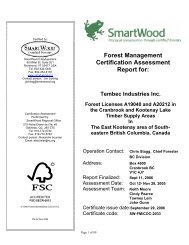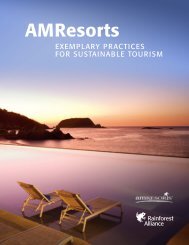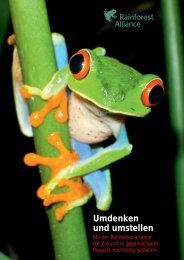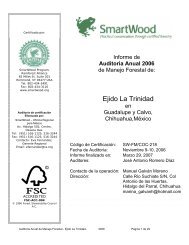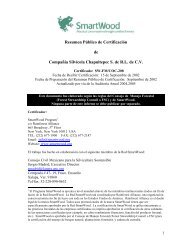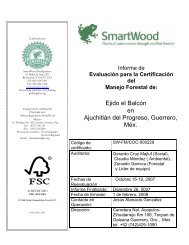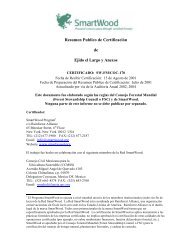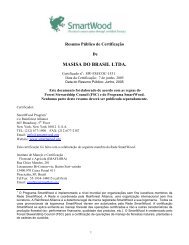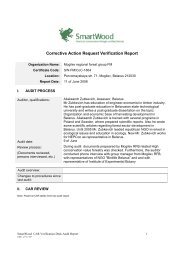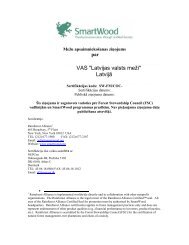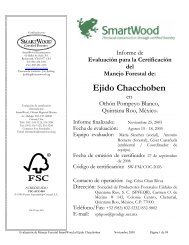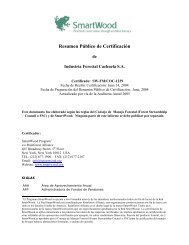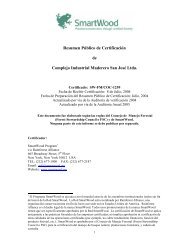ANNUAL REPORT - Rainforest Alliance
ANNUAL REPORT - Rainforest Alliance
ANNUAL REPORT - Rainforest Alliance
You also want an ePaper? Increase the reach of your titles
YUMPU automatically turns print PDFs into web optimized ePapers that Google loves.
28<br />
Red-Eyed Tree Frog<br />
The red-eyed tree frog, like all frogs, is an indicator<br />
species that provides evidence of an ecosystem’s health<br />
or impending vulnerability. Chemical contamination from<br />
pesticide use, acid rain and fertilizers, the introduction<br />
of foreign predators and increased UV-B exposure from<br />
a weakened ozone layer that may damage fragile eggs<br />
are all contributing to a general decline in the world’s<br />
amphibian populations. Though the red-eyed tree frog<br />
itself is not endangered, its Central and South American<br />
rainforest home faces constant threat. By working with<br />
farmers, foresters and tourism businesses to conserve<br />
the rivers and ponds where the red-eyed tree frogs lay<br />
their eggs, the <strong>Rainforest</strong> <strong>Alliance</strong> is working to ensure<br />
the survival of this unofficial rainforest mascot.<br />
A New Online Pathway for Migratory Species<br />
As migratory species—such as birds, sea turtles, butterflies<br />
and whales—travel across national borders, well-coordinated<br />
international cooperation is necessary to ensure<br />
their conservation. The Western Hemisphere Migratory<br />
Species Initiative (WHMSI), comprised of NGOs and government<br />
ministries from more than 35 countries, aims to<br />
conserve migratory species, their key habitats and migratory<br />
routes. In 2008, the <strong>Rainforest</strong> <strong>Alliance</strong> launched a<br />
revamped version of the WHMSI Pathway (www.whmsipathway.org),<br />
a Web site that provides a virtual meeting<br />
place where government representatives, NGO leaders and<br />
other stakeholders throughout the hemisphere can share<br />
their ideas about conserving migratory species.<br />
The WHMSI Pathway is part of the larger Eco-Index (www.<br />
eco-index.org) Web site, an online database created by<br />
the <strong>Rainforest</strong> <strong>Alliance</strong> to share detailed information<br />
about biodiversity conservation and sustainable development<br />
projects throughout the Americas. Since its launch<br />
in 2001, the Eco-Index has become the premiere vehicle<br />
for sharing project results, lessons learned, and best practices.<br />
The site now includes more than 1,250 listings and<br />
represents the work of over 900 government ministries,<br />
conservation NGOs, and research institutions throughout<br />
the Americas.<br />
Managed sustainably, tourism can<br />
help conserve biodiversity and<br />
provide sustainable livelihoods for<br />
people living in environmentally<br />
sensitive areas. Through our efforts,<br />
more than 4,000 small and mediumsized<br />
businesses as well as indigenous<br />
and community groups in Latin<br />
America have been introduced to<br />
sustainable tourism practices.<br />
Transforming the Global Tourism Industry<br />
Tourism is more than a popular pastime. It’s the world’s<br />
largest industry and an important source of income for people<br />
living in biodiversity-rich areas. To ensure that tourism<br />
benefits local communities and the environment, the <strong>Rainforest</strong><br />
<strong>Alliance</strong> has been promoting two new initiatives.<br />
08 <strong>Rainforest</strong> <strong>Alliance</strong> Annual Report



